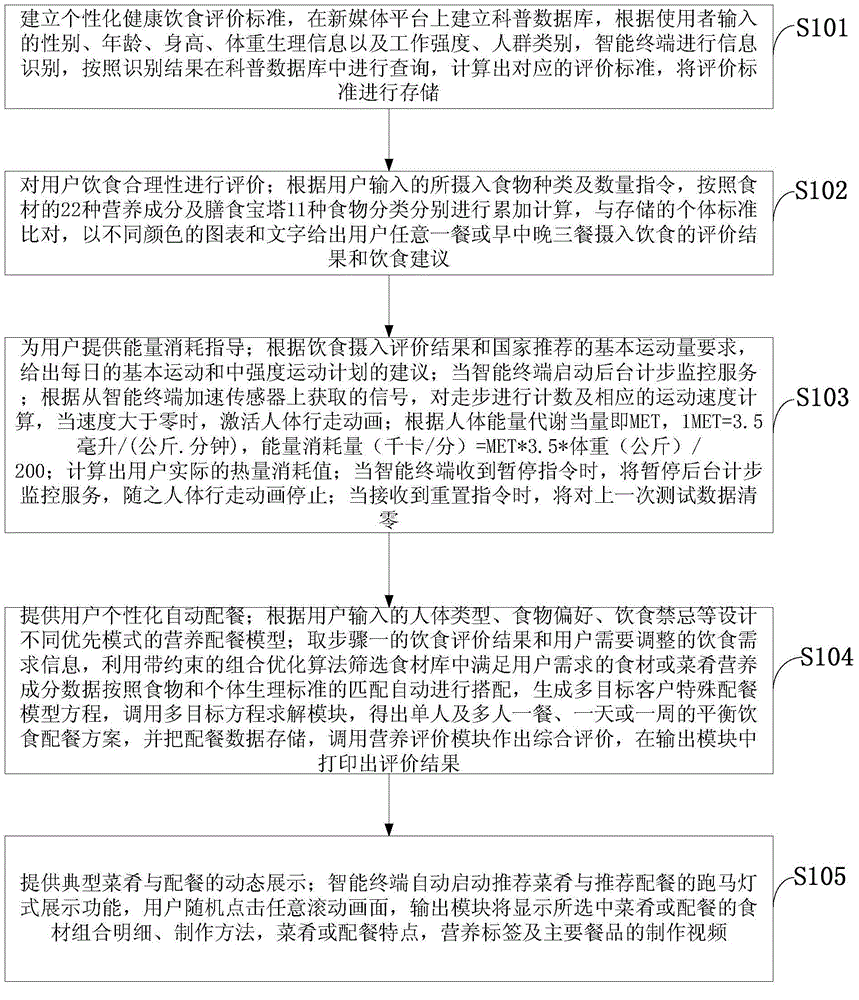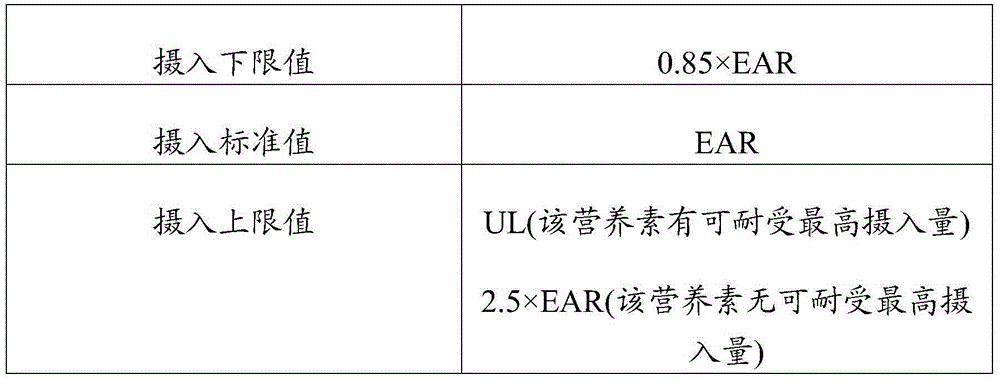Resident diet balance quantification analysis method based on intelligent information processing terminal, and system thereof
A technology for dietary balance and quantitative analysis, applied in the field of computer applications, can solve problems such as inability to use to guide daily life, lack of convenience and vividness, and inability to accurately achieve quantitative analysis of balanced nutrition.
- Summary
- Abstract
- Description
- Claims
- Application Information
AI Technical Summary
Problems solved by technology
Method used
Image
Examples
Embodiment 3
[0127] Take a 17-year-old male with a height of 170cm and a weight of 65kg who uses the registration module as an example:
[0128] Turn off the power, start the intelligent information processing terminal; click the icon, activate the platform, and enter for the first time, the system will store the food and human body standard database in the SD card of the terminal, and establish a daily diet database for the user for later use; after that, the user enters the personal Basic information, including gender, age, height, weight, work intensity, group classification, etc., the system calculates its BMI value as 22.5, prompts it as a standard weight, and saves its individual daily nutrients and standard intake information of dietary pagoda components, as follows:
[0129] Nutrients (22 types):
[0130] Calories: 2850Kcal; Protein: 75g; Fat: 79.17g; Sugar: 459.38g; Dietary Fiber: 42.8g; Cholesterol: 300g; Vitamin A: 820ug; Vitamin B: 1.6mg; Vitamin B2: 1.5mg; ;Vitamin E: 14mg; ...
Embodiment 4
[0134] Take an adult female with a height of 160cm and a weight of 65kg who uses the diet evaluation and exercise modules as an example for a moderate physical labor weight loss user
[0135] Click on the balanced diet guidance menu through the main menu of the system, and the first thing you will enter is the today’s diet module in this module. Users can input the content and intake of ingredients by handwriting, querying, and copying, such as
[0136] Breakfast: Hanamaki: 1 large); Poached eggs (fried): 2 (medium)
[0137] Lunch: rice (steamed): 1 box (snack box); tomato [tomato]: 3 (medium); pork (fat): 100 grams; chocolate: 100 grams
[0138] Dinner: steamed bun: 1 medium piece); Chinese cabbage (100g); pork ribs (150g)
[0139] After the user completes the input of the diet of the day, the system will automatically calculate the nutritional status of the diet, read in the individual standard nutrient intake file, make a comparison, generate a histogram, use colors to dis...
Embodiment 5
[0142] Take an adult male with a height of 175cm and a weight of 65kg who is a diabetic with moderate physical labor using the automatic catering module as an example:
[0143] Click on the catering menu through the main menu of the system to enter the catering interface. The user enters personal information, catering type, food preference, dietary taboos, etc., and the system forms a catering optimization model, and takes the dietary evaluation results in step 1 and the dietary demand information that the user needs to adjust. Use The combined optimization algorithm with constraints screens the nutritional data of ingredients or dishes in the ingredients database that meet the needs of users, automatically matches them according to the matching of food and individual physiological standards, generates the target customer's special catering model equation, calls the objective equation solving module, and obtains the The user's balanced diet plan for a week, the output informati...
PUM
 Login to View More
Login to View More Abstract
Description
Claims
Application Information
 Login to View More
Login to View More - R&D
- Intellectual Property
- Life Sciences
- Materials
- Tech Scout
- Unparalleled Data Quality
- Higher Quality Content
- 60% Fewer Hallucinations
Browse by: Latest US Patents, China's latest patents, Technical Efficacy Thesaurus, Application Domain, Technology Topic, Popular Technical Reports.
© 2025 PatSnap. All rights reserved.Legal|Privacy policy|Modern Slavery Act Transparency Statement|Sitemap|About US| Contact US: help@patsnap.com



